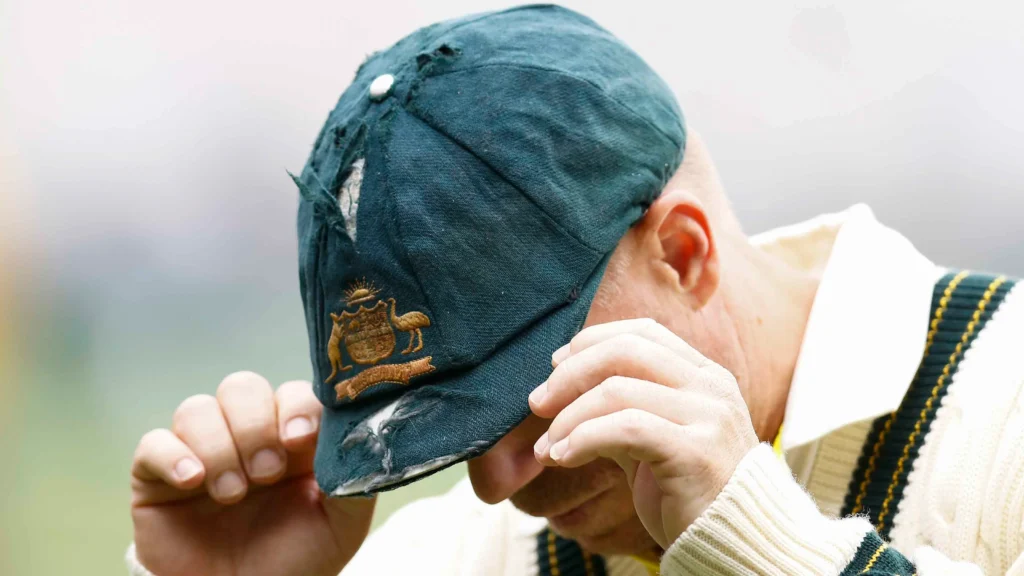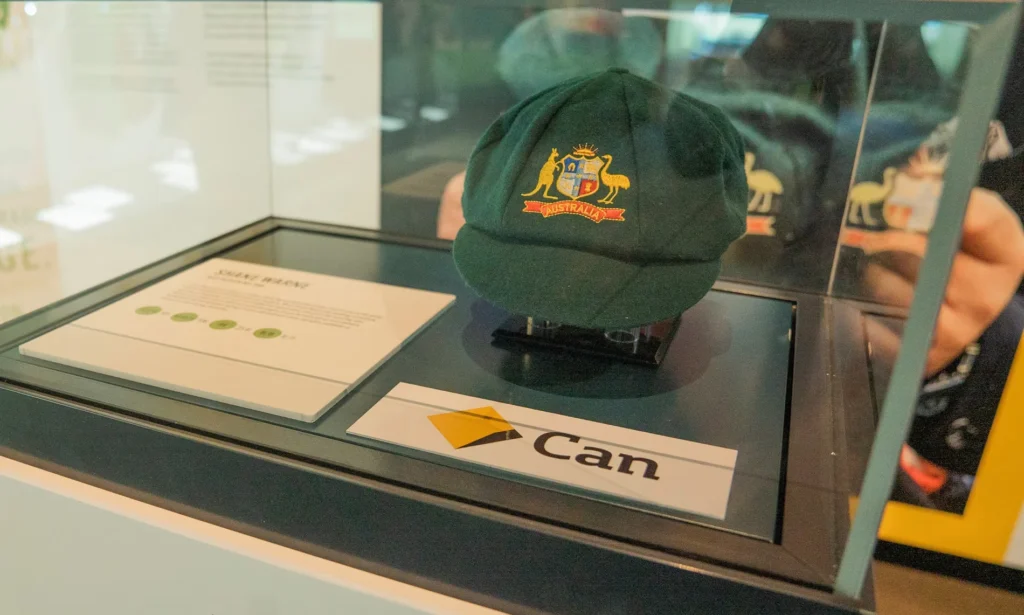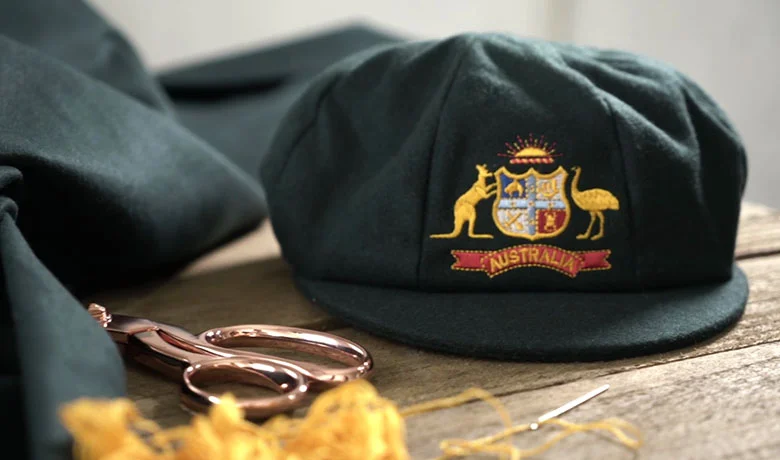What is a Baggy Green?
The baggy green is a significant cap worn by the players of the Australian Test cricket team. The cap is a symbol of the rich history and traditions of the Australian cricket team. It represents not only their achievements but also the collective solidarity of the team. Just like the Australian Open, cricket has a massive significance in Australia.
The origins of this cap can be traced back to the early 1900s. Since then, it has remained a cherished symbol of national pride and commitment to the sport.
The modern-day cap is crafted from dark myrtle green wool and features the Australian coat of arms on the front. It is presented to each new member of the Australian Test cricket team in a formal ceremony. A cricketer’s hard work, skill, and dedication to the sport are celebrated when they reach a significant milestone. This is an important achievement and marks a particular moment in their career.
The cap is regarded as a prized possession, cherished not only for its historical significance but also for the values and traditions it represents. It represents the opportunity to uphold the legacy of past, present and future players and make their mark on the game. For fans, the baggy green cap becomes an emblem of our nation and a token of national pride for Australian cricket.
The Significance of the Baggy Green

The baggy green holds much more significance than you think. David Warner, a professional Australian Test Cricket player, had his bag stolen out of his luggage back in January, and in that bag held his daughter’s presents and his baggy greens.
This caused so much distress to the player, to the point where he had to ask airlines and hotels to look through the CCTV footage to find it. In the end, the player even took to social media to make a plea for the return of his baggy greens. Even the Prime Minister, Anthony Albanese, was drawn into the issue, calling on whoever took the iconic caps to return them. Thankfully, there is a happy ending, where the caps are returned to the management team.
The Value Baggy Green Holds

Not only do they hold sentimental value, but the caps also hold a very noteworthy monetary value to some, especially to collectors. Baggy greens can sell up in auctions as high as other sports memorabilia. So the question is, how much is a baggy green worth nowadays?
In recent years, Sir Donald Bradman’s first baggy green cap has sold for a whopping $450,000. This was bought by an Australian businessman, Peter Freedman. This was the second-highest price ever paid for any piece of cricket memorabilia. Don Bradman baggy green cap purchase will go down in sports memorabilia history.
The most expensive baggy green ever sold was Shane Warne’s baggy green. Warne put his baggy green up for auction to raise funds for the bushfire appeal in January 2020. After the Commonwealth Bank donated it to the Australian Red Cross, it fetched $1 million, surpassing expectations.
Ever since then, it has been on a national tour, visiting cricket clubs, community centres, and schools. It is housed at the Bradman Museum in Bowral as part of a permanent exhibition. The museum also exhibits 30 baggy greens dating back to the 1800s.
Who Makes the Australian Baggy Green Cap?

Cricket has been an integral part of rural communities in Australia for a long time, with sheep stations having their own cricket teams for years. Many cricket players, both past and present, have had connections to the wool industry.
Cricket is the number one participation sport in Australia, with an increasing number of people enjoying the various forms of the game, from backyard cricket to professional matches at iconic stadiums like the MCG. The wool industry in Australia has a long-standing association with cricket.
The coat of arms of the Australian cricket team, which was created before the team was officially established, features a sheep as a symbol of the prominent wool industry in the Australian community at the time of its formation.
The team first wore their signature Baggy Greens made of wool when they sailed for England in 1899. This was not surprising as the wool industry was the most significant in the colonies, with 25 sheep for every man, woman, and child. It was fitting that the team was captained by Joe Darling, a formidable middle-order batsman and woolgrower from South Australia.
Cricket enthusiasts who are woolgrowers from various regions across Australia, ranging from the outback to the coast, and having different kinds of farms such as extensive pastoral holdings and small family businesses, have generously contributed to the creation of our most revered sporting symbol. They have donated some of the natural fibre they grow with great passion for helping produce Baggy Green.
The cloth has been handed over to Kookaburra Sport for the production of the Baggy Green. Kookaburra Sport is a 100% Australian family-owned and operated global business that was established in 1890.
They are the official uniform manufacturer for Cricket Australia and are responsible for making every Baggy Green. The Baggy Green is made by cutting individual panels from flat fabrics and sewing them together. This process occurs in Perth.
Conclusion
After getting to know all about the baggy green, who knew a hat from sports could hold such significance for an entire country? From having a crucial sentimental value to also having a monetary one, the baggy green means a lot to a big group of people. It’s up there for sports memorabilia. If you want to learn about other small ways to make an extra buck, be sure to check out our article on how to.
There are plenty of ways to make money through sports; selling sports memorabilia to collectors is one way. Who knows what the next sports collector item will auction off for millions? I suggest going into your garage or attic or going through your grandparents’ stuff; who knows what old item you might find that can fetch a pretty penny.





